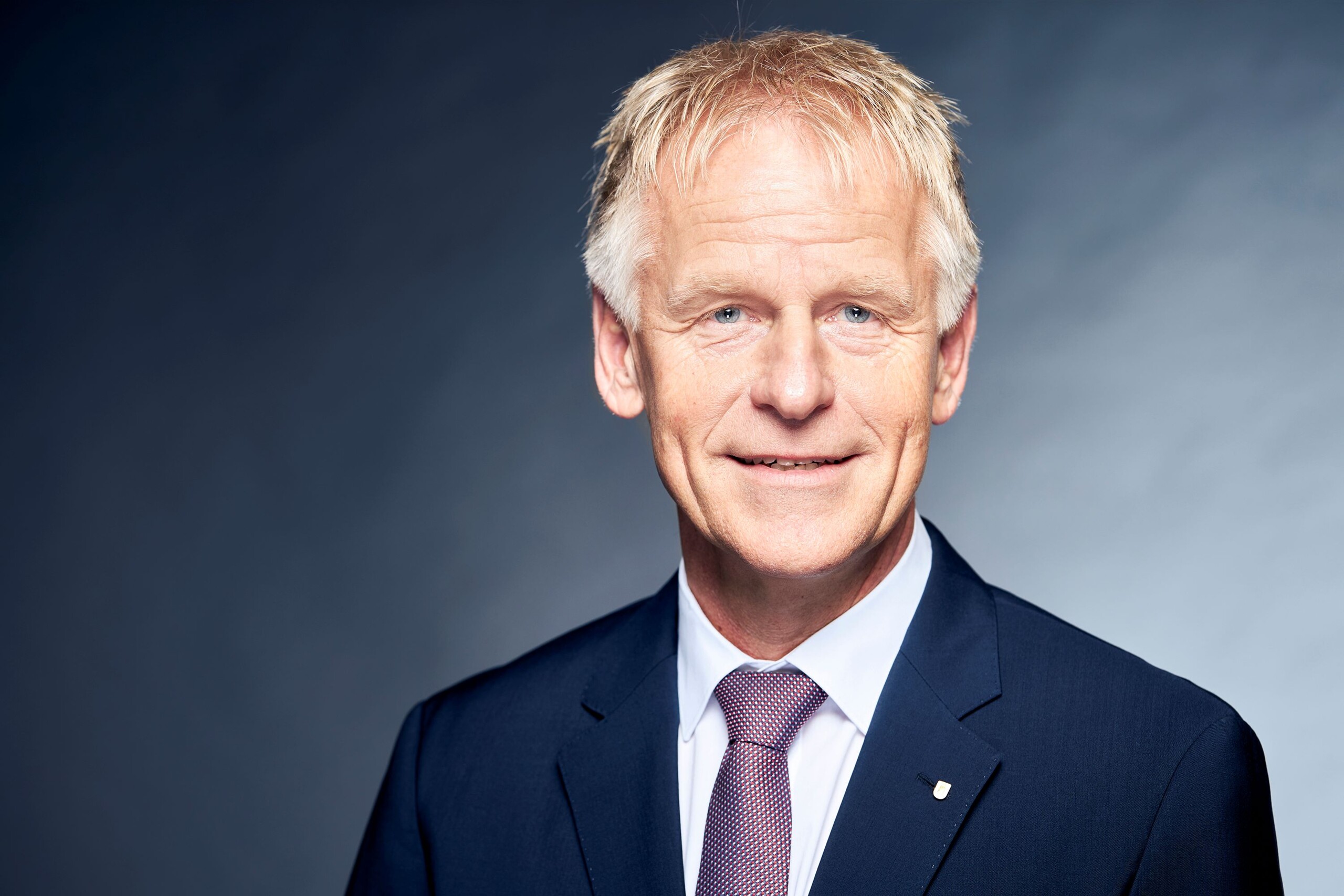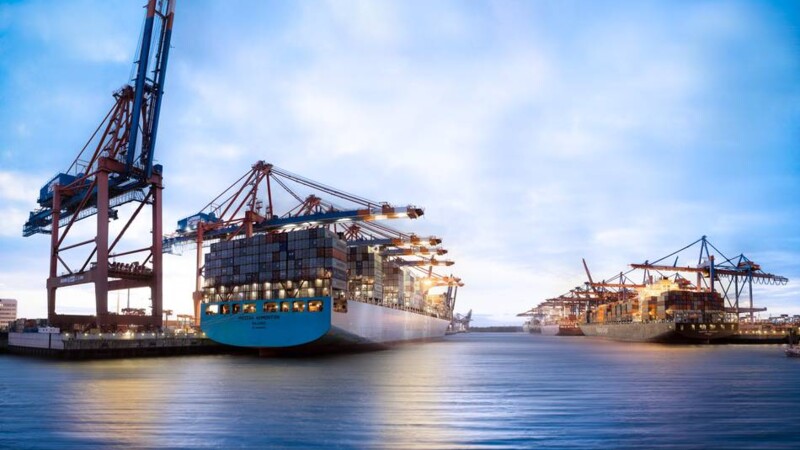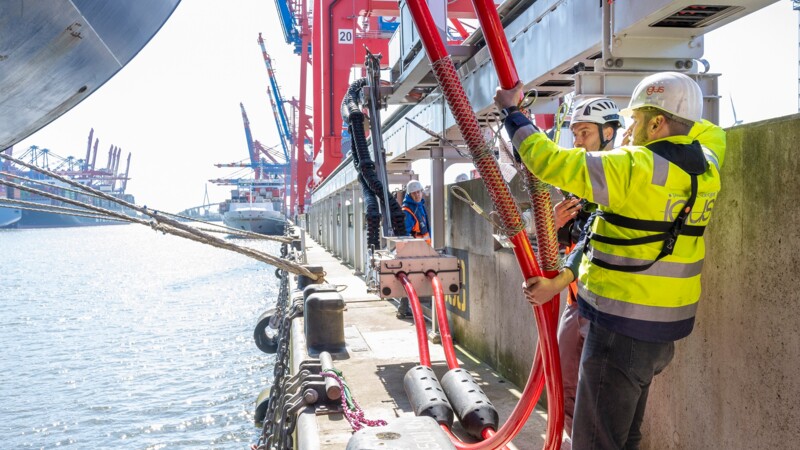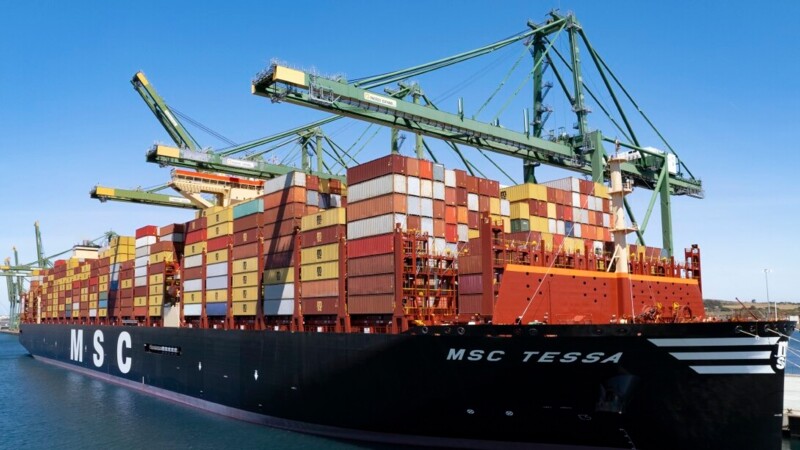Meier cited the declaration on the decarbonisation of global shipping, signed at the Hamburg Sustainability Conference (HSC) in October 2024, which promotes green shipping corridors. "This declaration clearly is highly visibile worldwide. When I was in Miami and Seattle, I was asked whether the respective ports could still join. They can join during the next HSC in June." The HPA is working with other ports, industry leaders and cyber security experts to share knowledge and best practice about potential cyber threats.
"Sustainability is not a competitive factor," said Jens Meier, CEO of the Hamburg Port Authority (HPA), and stressed, "challenges such as sustainability or resilience to cyber-attacks can only be solved jointly." In his role as President of the International Association of Ports & Harbours (IAPH), Meier also called for greater cooperation and a productive knowledge sharing. More than 180 ports and 150 related companies in some 90 countries are part of the network. "And I see a great willingness to co-operate," he added.
Global collaborations

International trade
China and the United States are Hamburg's top trading partners. However, U.S President Donald Trump's tariffs could potentially slow things down. And in 2024, the U.S. overtook China to become Germany's leading trading partner. "I personally am optimistic that trading systems will remain open despite geopolitical hurdles. The Port of Hamburg has excellent connections to nearly every country and I am confident that this will continue," Meier added.
International growth
In 2023, container handling came to 7.7 million standard containers (TEU), which corresponds to a drop of 600,000 TEU over 2022. Meier noted: "The global economy is set to grow by just over 3 per cent in the coming years, according to the International Monetary Fund. That creates growth potential for Germany's largest seaport." In this context, Meier referred to the free trade agreement reached between the EU and four MERCOSUR countries Argentina, Brazil, Paraguay and Uruguay ín late 2024. "Such agreements show that there is political will to exploit this potential." The Ministry of Economics and Innovation's Port Development Plan 2040 has identified potential for growth and expects container handling to reach 13.1 million TEU by 2035.

Maritime innovations
Meier also expressed satisfaction that the Port of Hamburg is a catalyst of growth. The Homeport, in particular, acts as a platform for innovation. "We co-operate with universities here, but startups can also test their prototypes under real conditions at HPA. The aim is to find meaningful use cases embedded in our maritime ecosystem," Meier pointed out. Yet, the term maritime is not limited to water. In January, a first drone flew successfully from Hamburg to Neuwerk, marking the first flight over three German states. The test flight occurred after HPA, Hamburg Police and Hamburg Aviation opened Droneport, a site for unmanned aviation and mobile sensor technology in the port last June. Until now, helicopters have been the preferred mode of transport for security, disaster and flood protection. "Drones will provide information more economically and ecologically in future," Meier stressed. Flying drones beyond the line of sight of the pilot was a real milestone. However, for safety reasons, emergency landing sites had to be planned along the route to Neuwerk. "A landing area must be empty for a drone to make an emergency landing, and was blocked off by human security guards for the test flight". That will change in future as HPA is working with startups to adapt sensor systems e.g., those used in the automotive industry, for drones.
ys/sb/pb
Sources and further information
Port of Hamburg as economic catalyst
The 4,300-hectare Port of Hamburg is Germany’s largest contiguous port, commercial and industrial area and provides around 607,000 related jobs nationwide. It generates gross value added of EUR 51 billion across Germany. The Hamburg Metropolitan Region accounts for around EUR 12.4 billion of that sum, and Hamburg itself for EUR 8.1 billion. The port-dependent economy generates EUR 2.57 billion in revenue throughout Germany and EUR 1.53 billion in the metropolitan region of which EUR 1.2 billion is generated in the City of Hamburg. (Source: Port Development Plan 2040)
More
Similar articles

AI improving security in Port of Hamburg

